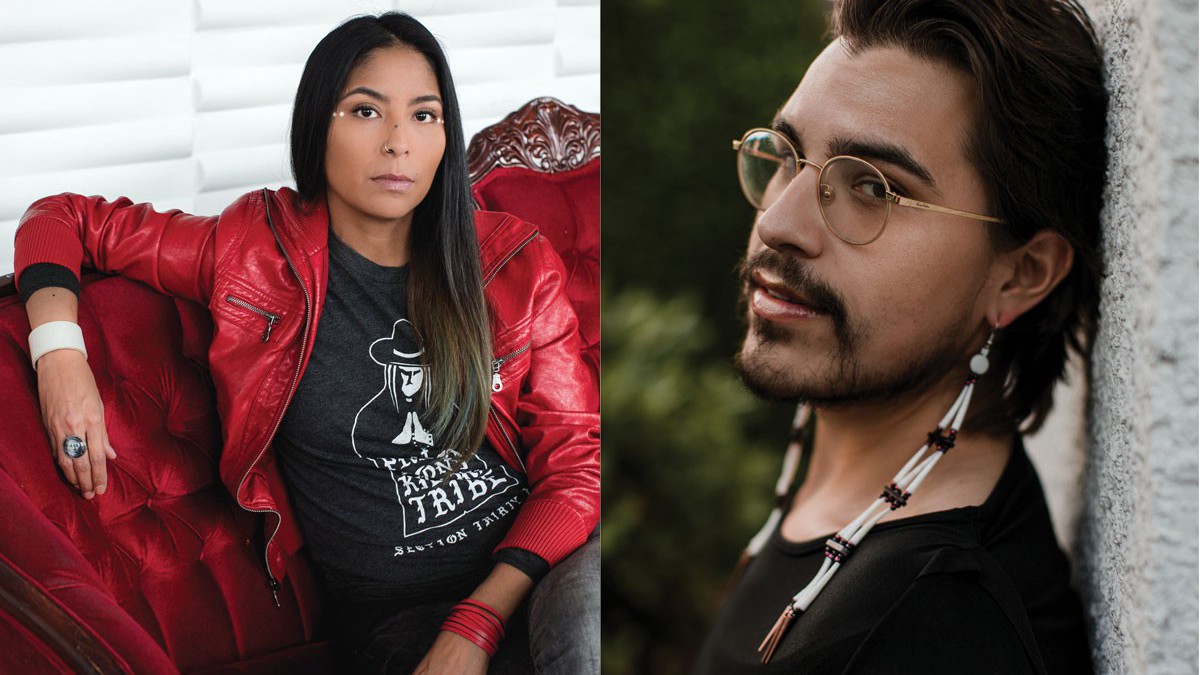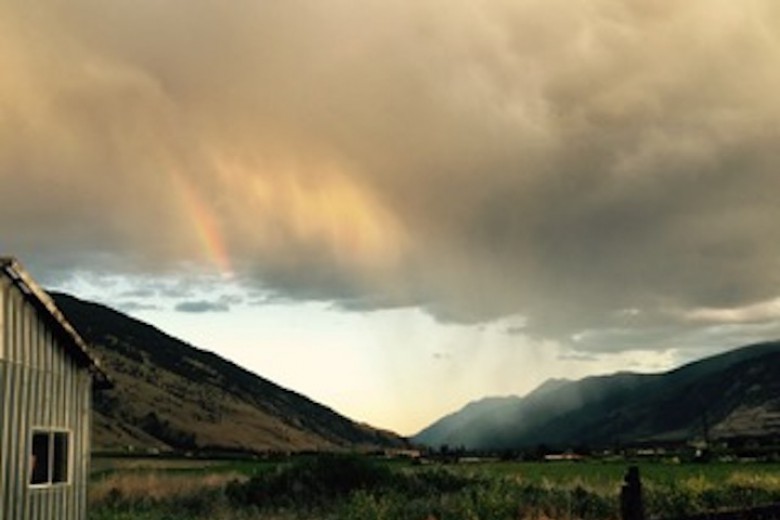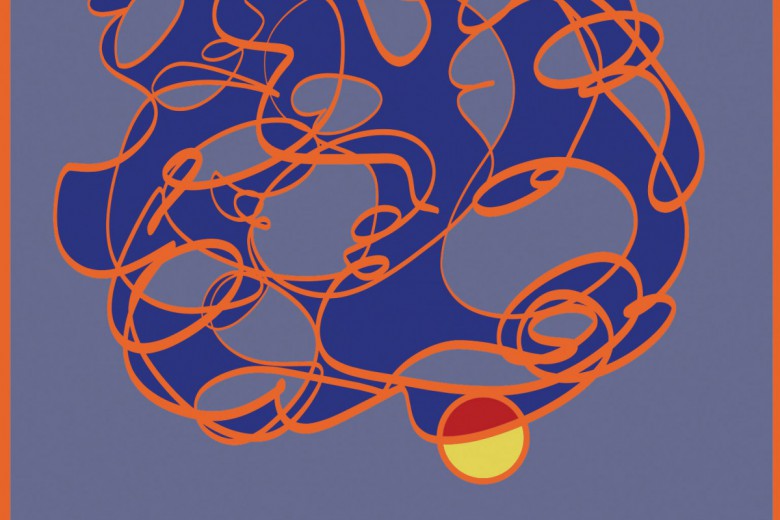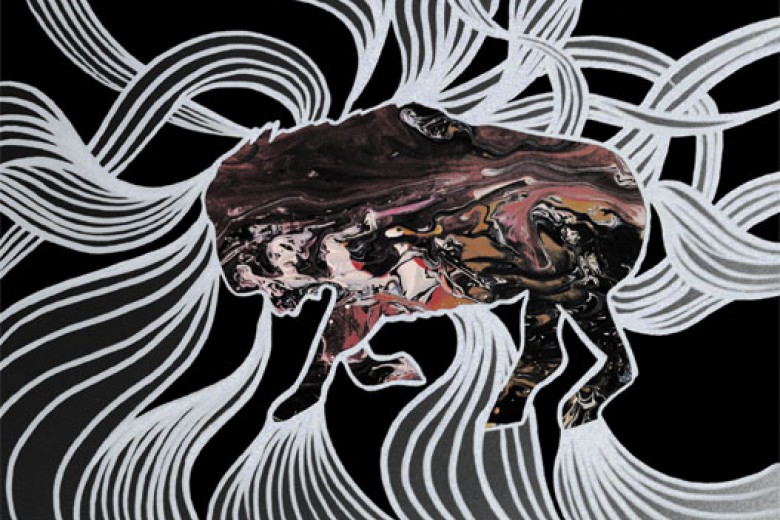We’re in the ninth year of Briarpatch’s Writing in the Margins contest, where we invite our community to bring to life issues of social and environmental justice through poetry, photography, and creative non-fiction. Winners are published in Briarpatch Magazine and receive $500 in prizes; runners-up are published on briarpatchmagazine.com and receive $150.
This year’s creative non-fiction entries will be judged by Joshua Whitehead. Joshua is an Oji-nêhiyaw, Two-Spirit member of the Peguis First Nation (Treaty 1). He is the author of the novel Jonny Appleseed (Arsenal Pulp Press, 2018) and the poetry collection full-metal indigiqueer (Talonbooks, 2017). Jonny Appleseed won a Lambda Literary Award; was a finalist for the Governor General’s Literary Award for Fiction; and was long-listed for the Giller Prize. Joshua is currently working on a PhD in Indigenous literatures and cultures in the University of Calgary’s English department (Treaty 7).
This year’s photography entries will be judged by Nadya Kwandibens. Nadya is Anishinaabe (Ojibwe) from the Animakee Wa Zhing #37 First Nation in northwestern Ontario. She is a self-taught portrait and events photographer. In 2008, she founded Red Works, a dynamic photography company empowering contemporary Indigenous lifestyles and cultures through photographic essays, features, and portraits. Nadya’s photography – which focuses on urban Indigenous identity and representing decolonial assertions of resistance and resurgence – has been exhibited in group and solo shows across Canada and the United States.
This year’s poetry entries will be judged by El Jones. El is a spoken word poet, an educator, journalist, and a community activist living in African Nova Scotia. She was the fifth poet laureate of Halifax. In 2016, El was a recipient of the Burnley “Rocky” Jones human rights award for her community work and work in prison justice. She is a co-founder of Black Power Hour, a live radio show with incarcerated people on CKDU that creates space for people inside to share their creative work and discuss contemporary social and political issues; along with this work, she supports women in Nova Institution in writing and sharing their voices. Her book of spoken word poetry, Live from the Afrikan Resistance! was published by Roseway Press in 2014.
Briarpatch editor Saima Desai talked to Joshua and Nadya about social movements, taboos, and their newest work.
What do you think is the role of art in social movements? When was a time when you felt like your creative work has been part of a movement?
NK Art pushes through barriers and forces socio-political matters to the forefront, from the margins and peripheries, and demands to be seen, demands (re)action. Art disrupts narratives. And so photography is a means for me to be a part of that process and interruption. The first time that I felt my art was a part of a movement was when Idle No More began. I was there when the first major rally took place in Ottawa and I’ve photographed several more across the country since then. The energy at these gatherings is unifying and invigorating. These acts of resistance are electrifying and empowering.
“But for me, writing and literature has always been hand-in-hand with ethical kinship.”
JW I suppose some would say my writing is part of this new rise in Indigenous queer, trans, Two-Spirit, and non-binary writing that has recently come to the forefront, alongside the work of Indigenous women writers. But for me, writing and literature has always been hand-in-hand with ethical kinship. That is, to rise, compliment (and critique when needed), and empower our kin to stand beside us in the literal and literary futures we’re trying to build. I knew, when I was nominated for the Trans Poetry Lambda Award with full-metal indigiqueer that I would have to embody my beliefs, walk the walk if you will, so I withdrew. I never knew it would have such a large impact but it was important for me to be a good kin to my communities, those I’m immediately a part of and those I am allied with.
We’ve seen more writing and art about queerness, transness, and race gain mainstream acceptance and acclaim in recent years. What political issues are still taboo in creative writing and art? How do they show up in your work?
NK The main purpose of my lens is to bear witness, to provide audiences both within the Indigenous community and beyond a glimpse of what Indigenous realities look like. So I attend a lot of events surrounding Indigenous matters. Earlier this year I worked for the National Inquiry into Missing and Murdered Indigenous Women and Girls (MMIWG), providing photographic and on-camera behind-the-scenes content for their social media campaign to promote awareness of MMIWG. I also photographed the presentation of the National Inquiry’s final report and closing ceremony. The public reaction to the campaign launch ignited a mix of emotions for me, but I was particularly frustrated in the week following the release of the final report; we all saw how mainstream media handled the use of the word “genocide” within the report. What’s considered a taboo topic for one group in society doesn’t mean it’s necessarily taboo for all. It’s not taboo for us to talk about genocide because it is very much lived and real. There is still so much that non-Indigenous people need to understand, acknowledge, and accept when it comes to the history of genocide in Canada.
“What’s considered a taboo topic for one group in society doesn’t mean it’s necessarily taboo for all. It’s not taboo for us to talk about genocide because it is very much lived and real.”
JW From an all-women (and nearly all BIPOC, may I add) shortlist for the Hilary Weston Writers’ Trust Prize, to Casey Plett winning the Amazon Canada First Novel Award, we have seen trans, queer, and BIPOC writers taking the literary world by storm. For me, while reading reviews and taking note of questions asked during Q&As with Jonny Appleseed, it seems that unabashed and explicit depictions and/or sensual imagery of queer sex, sex work, and sexualities is still met with resistance, conscious or not, from the readership of this project we call CanLit. I wrote Jonny as young adult fiction originally and wanted to create a text that showed our livelihoods in sexy and sexed ways. Many people yet ask me if they think it’s appropriate for their teenager to read it and my response is always to say, “Trust me, they’ve read this and seen, heard, or viewed much more.” It’s the idea of innocence, I think, that delimits what we teach our children and youth – as if, in this highly technologic and digital age, they are not already privy to such knowledges, and not already learning from less credible or insightful sources.
What are you working on right now? How is it going?
NK Right now I’m working on a series titled The Red Chair Sessions. It’s been well-received, with so many people wanting to take part. I have nearly 30 portraits photographed so far, from sessions across the country. In short, this series is about reclamation of Indigenous land and it places importance on the connection between Indigenous languages and the land. The red chair signifies Indigenous bloodlines and our deep connection to the land. This series highlights land acknowledgements and emphasizes that we are all guests on Indigenous land, no matter where we come from. I love researching and writing each photo caption in Indigenous languages: it’s a refusal of the colonizer’s language.
JW I’m currently working on a book of creative non-fiction slated to be released with Knopf Canada that is tentatively titled Making Love With the Land. It’s a book of highly personal, individual essays that are concerned with Indigeneity, mental health, and queerness – from, within, and through a nêhiyaw (Cree) lens. Within it, I go through body dysmorphia, eating disorders, insomnia, childhood and child agency, anxiety, sexual assault, and depression, among other topics. So far, it’s coming along slowly, but texts such as this are so highly attached to the body, as if they were a limb, that they need to be fed and bled unhurriedly so as not to become too cumbersome. Biotexts, they require a great deal of care and sacrifice – I’m letting the book come to fruition as I live through and survive such topics.
Nadya, why do you think it’s important for Indigenous people to be photographed by other Indigenous people? How does this show up in your work?
NK I’m reminded of a quote by sculptor and installation artist Faye HeavyShield: “For a world that continues to believe that the noble savage is still up for adoption: the cradle is empty. The aged child stands beside you, with teeth, with voice, with song.” It’s so vital that we tell our own stories. Indigenous voices were silenced, our histories erased, and our people were defined and labelled by white men. But now we see a definitive and unapologetic reclamation of our own realities. Over the years I’ve had the privilege of visiting with so many Indigenous people wanting to share their stories with me because it’s an empowering process. My purpose as an artist-photographer is to be a conduit for those stories. Holding and carrying our stories comes with a huge responsibility that I do not take lightly; I consider it a great honour and privilege.
Joshua, what’s your relationship to Jonny like, these days? Has it changed since you first began work on Jonny Appleseed, and do you think you’ll ever reach a point where you’re done writing about him?
JW Jonny is such a poltergeist in my life. I love that boy. This summer I did an intensive French translation and an audiobook for Jonny Appleseed and I find myself in the midst of a rather sublime experience: that Jonny, past-me, was teaching present-me how to live, in order to survive tomorrow. I have much to learn from him yet, and he has many stories left to share. There are characters in Jonny I want to return to one day, such as Tias. I feel much of his story is left largely untold – I’d like to explore him. I’m also very interested in returning to an older Jonny – dad-bodied, queerer, and sexier than ever – and explore what it would be like for two 30-year-old men to explore their presents through a history that is so laced with desire and longing.
Rapid-fire round!
What’s the first piece of art you ever made?
NK A short story about Nokomis.
JW Oh, I’m sure it was macaroni art for a Christmas decoration!
Most recent piece of writing or art that made you cry?
NK Billy-Ray Belcourt, NDN Coping Mechanisms.
JW Ocean Vuong’s On Earth We’re Briefly Gorgeous, and also Maggie Rogers’ song, “Back in my Body.”
What do you think is overrated in art?
NK Fame.
JW Realism. Bend rules, bleed genres, overlap texts, imagine wondrous futurisms – because we sure as hell aren’t living in one now.
What do you eat a lot of when you’re working?
NK Organic tortilla chips and salsa.
JW Pink Lady apples because I like to live my NDN Rizzo fantasy.
What time of day are you the most creative?
NK After my second coffee.
JW I get the most inspiration during the day, and I write those into notes on my iPhone; then I do most of my writing at night when I supplant those notes into my works.
How do you know when you’re done?
NK One-on-one photo sessions: when we’re both laughing or smiling. Events coverage: when I’ve done 150+ squats.
JW I don’t, that’s the problem, hah. Though I know I’m done, temporarily, when the story lulls into a biting finale that crescendoes into a tight braid from a strand of loose grass.
Your most recent cause for celebration?
NK My niece enrolled in photography courses.
JW My most recent literary celebration was probably winning the Gay Fiction Lambda Award alongside my fellow Arsenal Pulp Press authors Casey Plett and Larissa Lai.
What’s your number-one tip for writers or photographers submitting to the contest?
NK Don’t be afraid to be vulnerable and honest with yourself and your work. Share your truth.
JW Don’t write to sound white, by which I mean don’t mimic “the greats” or the canon. Write for yourself: time-travel to the child-you who so desperately needs to see themselves in the world and hear the knowledge you’ve gained now, and tell them the story you’re itching to tell. And write as if you were sitting at your grandmother’s kitchen table talking to her, if she can understand. Then I think you’re golden.
The deadline for Writing in the Margins contest entries is December 1, 2019. Thank you to our sponsors: Talonbooks, Fernwood Publishing, and the Regina Public Interest Research Group (RPIRG).







